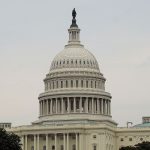The ongoing debate about crime statistics has been riddled with confusion, particularly when the media and certain political figures flounder in their explanations of what constitutes true crime rates. Some insist on conflating the number of reported crimes with the actual total number of crimes occurring in society. This muddled thinking suggests that they might be trying to hide something—or perhaps they just need a crash course in common sense.
To put it simply, not every crime under the sun finds its way into a police report. Many crimes go unreported, and it’s crucial to recognize that these unreported crimes still exist and contribute to the overall crime picture. Yet, for some reason, this basic distinction proves elusive for many in mainstream media, who seem more interested in headlines that fit their agenda than in accurate reflections of reality. The result? A distorted narrative that fuels a sense of helplessness among citizens and plays into the hands of those advocating for more government intervention.
.@RepMikeJohnson: "[Democrats] are changing the subject…and obscure the facts because the facts are difficult for them to face…
We have a violent crime epidemic…and everyone in America knows it." pic.twitter.com/bOgUxRGagx
— Daily Caller (@DailyCaller) April 17, 2023
The laughable irony here is that the same folks who rush to spin stories about rising crime rates in urban areas have a tendency to conveniently overlook the fact that not all crime is reported. They grasp onto the numbers that fit their narrative, ignoring the broader context that could actually help inform the public. This is akin to blaming a thermostat for a broken air conditioner because it doesn’t reflect the actual temperature in the room. Cracking down on crime requires honest dialogue and statistics, not selective editing of inconvenient truths.
When certain individuals in power insist on using only reported crime figures, the implications can be both frightening and amusing. If those in charge cannot grasp this essential distinction, it raises questions about their competency—or worse, their motives. Are they intentionally misleading the public to push for more regulation? Or do they truly not comprehend the nature of crime itself? It’s hard to know, but it sure makes for a great spectacle to watch.
In a time when public safety has taken center stage, a concise understanding of crime reporting is required. It’s not just about raw numbers or sensational headlines. Real solutions to crime can only be found when an accurate picture is painted, one that acknowledges both reported crimes and those that slip through the cracks. It’s time for honest accountability from media outlets that should know better and politicians who should focus less on demagoguery and more on safeguarding communities. If clarity is genuinely desired, society must demand that those in power grapple with the hard truths of crime and its reporting, rather than playing games with numbers.




